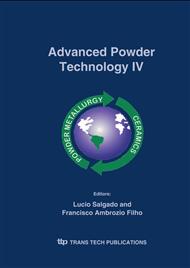p.238
p.244
p.251
p.258
p.264
p.270
p.278
p.285
p.293
Computational Fluid Dynamics Applied to Bradley Hydrocyclones
Abstract:
Hydrocyclones are centrifugal devices employed on the solid-liquid and liquid-liquid separation. The operation and building of these devices are relatively simple, however the flow inside them is totally complex and its prediction is very difficult. The fluid moves on all possible directions (axial, radial and swirl), the effects of turbulence can not negligible and an air core along the center line of the hydrocyclone can appear when the operational conditions are favorable. For that reason, the most models that are used to predict the hydrocyclone performance are empirical and require the collection of the main operational and geometric variables in order to validate them. This work objectified to apply Computational Fluid Dynamics (CFD) on Bradley Hydrocyclone and compare the results from this technique to empirical models. The numerical simulation was made in a computational code called Fluent® that solves the transport equation by finite volume technique. The turbulence was described by Reynolds Stress Model (RSM) and the liquid-gas interface was treated by Volume of Fluid Model (VOF). In agreement with the results from the simulation, it was possible to predict the internal profiles of velocity, pressure, air core, particle trajectories, efficiencies, pressure drop and underflow-to-throughput ratio.
Info:
Periodical:
Pages:
264-269
Citation:
Online since:
November 2005
Keywords:
Price:
Сopyright:
© 2005 Trans Tech Publications Ltd. All Rights Reserved
Share:
Citation:


